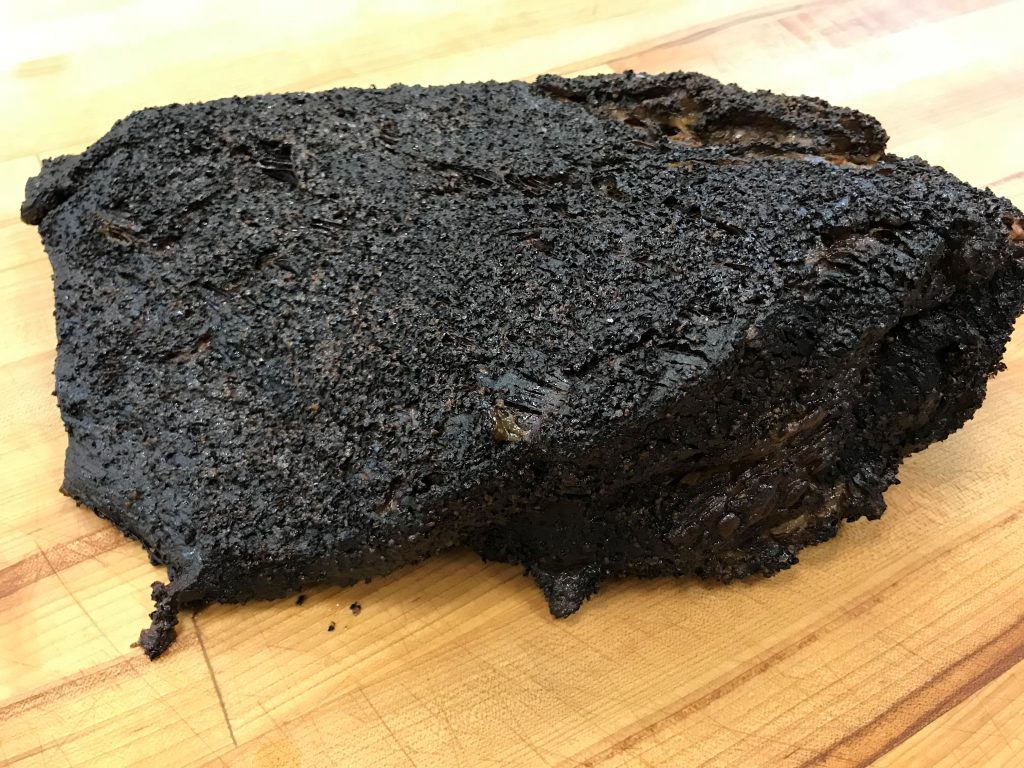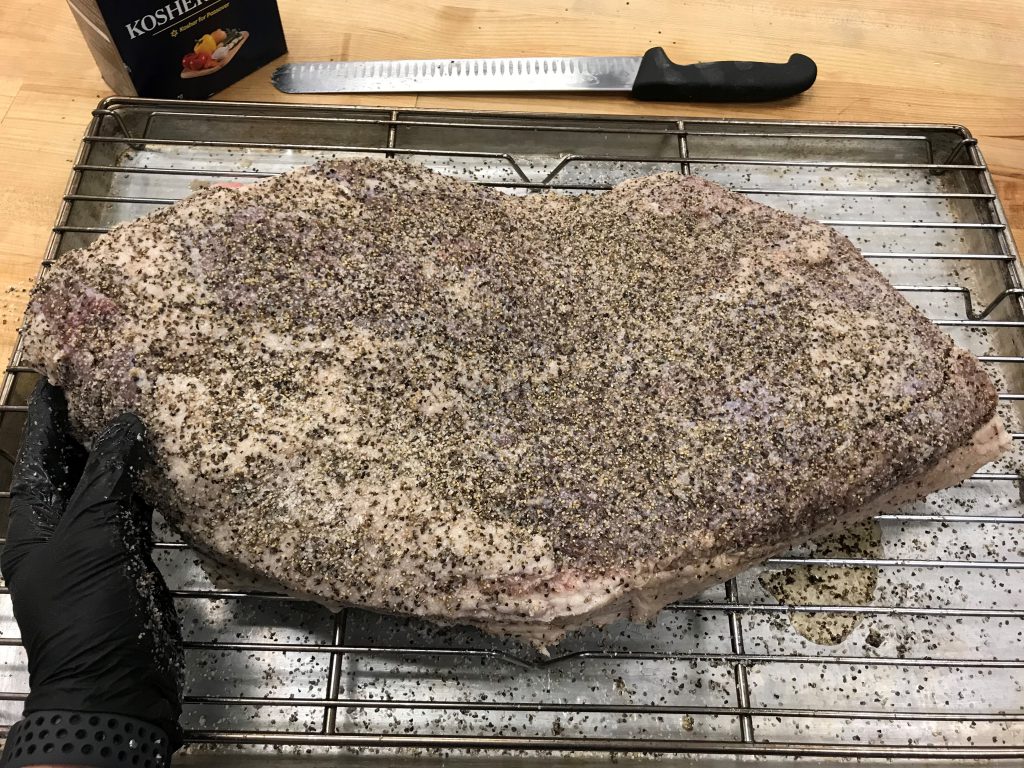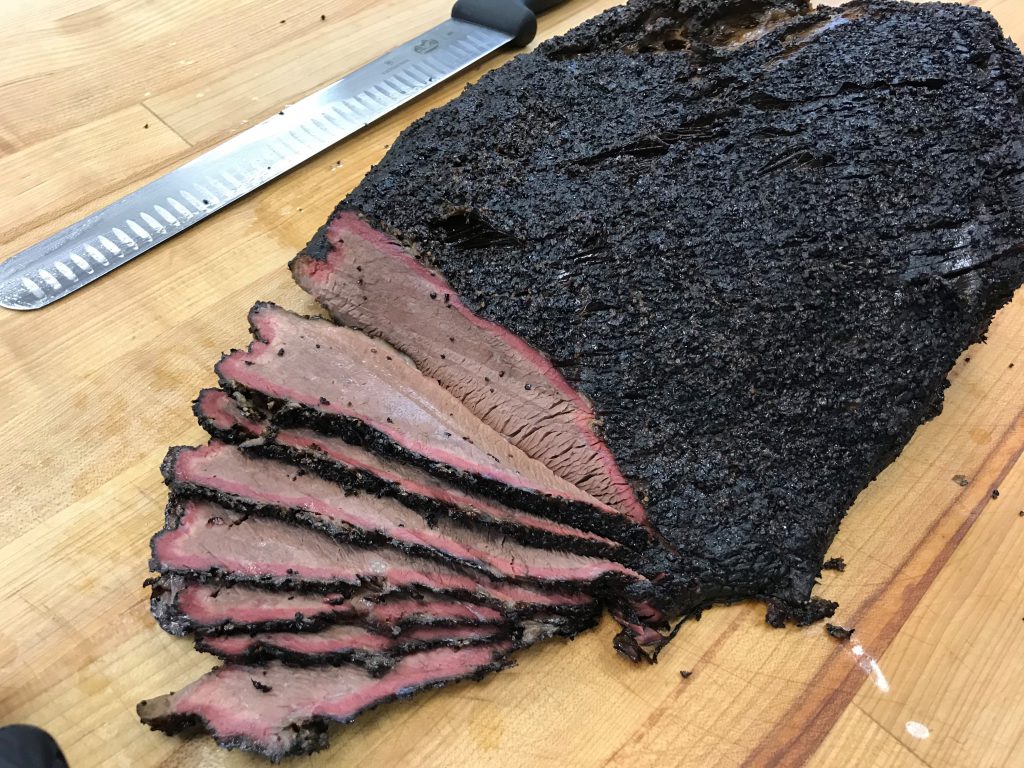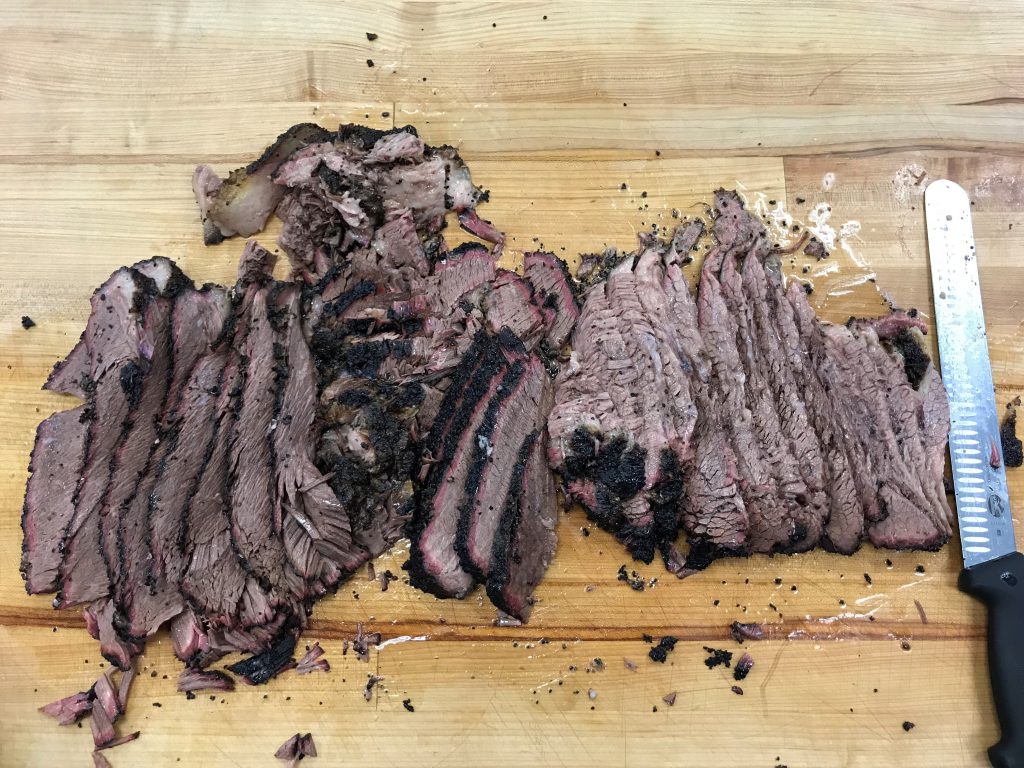Texas Brisket… how and why?
30 May 2018, Posted by in Chris' Corner
Barbecue is a long-standing tradition of Texas. As most people know, Texas is the proudest state in the US. One thing Texans take the greatest pride in is their style of barbecue especially brisket. The art of smoking meats was brought over by the German and Czech settlers in the mid-19th century. Many of the undesirable, tough cuts were smoked at low temperatures for long periods of time to tenderize and enhance the flavor with smokey goodness.
Briskets are the king of the of Texas BBQ. This cut (just like a pork butt) has a large amount of connective tissue containing collagen. Under the proper environment, heating up the collagen converts it to gelatin. A good rule of thumb is to bring the meat up to an internal temperature of 185°F to 195°F to attain this conversation of tough meat to melt in your mouth deliciousness. The ideal peak internal temperature of brisket should be 205°F-210°F since beyond that it will begin to dry out. This seems counter intuitive since most meats cooked pass 165°F (personally pass 135°F) may as well be a hockey puck.
 So that seems easy enough as long as you bring the internal temperature up to 195°F the meat should be perfect… Wrong. There are 8 important rules to follow to achieve a good brisket.
So that seems easy enough as long as you bring the internal temperature up to 195°F the meat should be perfect… Wrong. There are 8 important rules to follow to achieve a good brisket.
Rules of Texas Brisket



 So that seems easy enough as long as you bring the internal temperature up to 195°F the meat should be perfect… Wrong. There are 8 important rules to follow to achieve a good brisket.
So that seems easy enough as long as you bring the internal temperature up to 195°F the meat should be perfect… Wrong. There are 8 important rules to follow to achieve a good brisket.
Rules of Texas Brisket
- Trim the fat
- Salt and Pepper Only (preferably Morton’s Kosher Salt and coarse cracked black pepper)

- Keep it low and slow
- Don’t crank up the heat when you hit the Stall
- Choose the right wood for the perfect smoke

- Brisket Wobble
- Resting Holding Brisket
- Slicing Against the Grain


